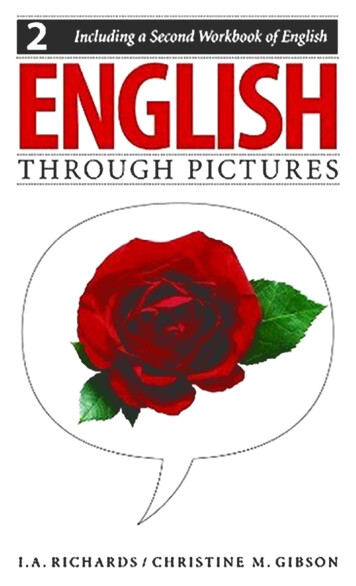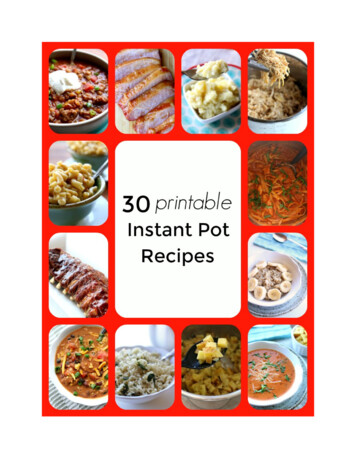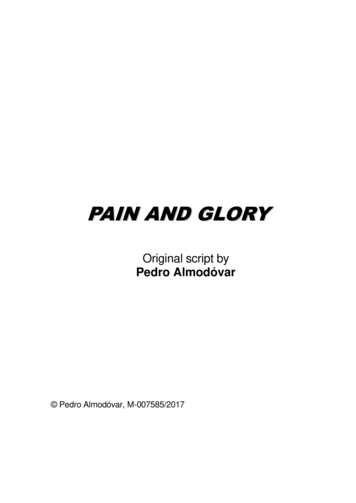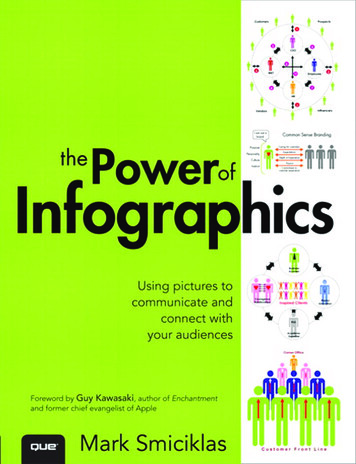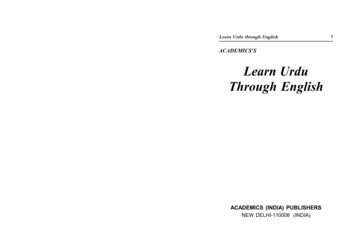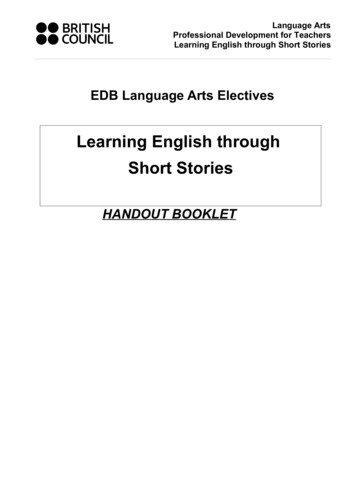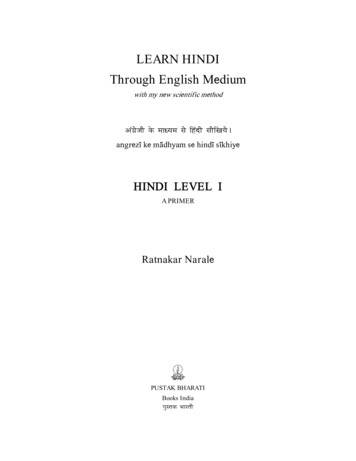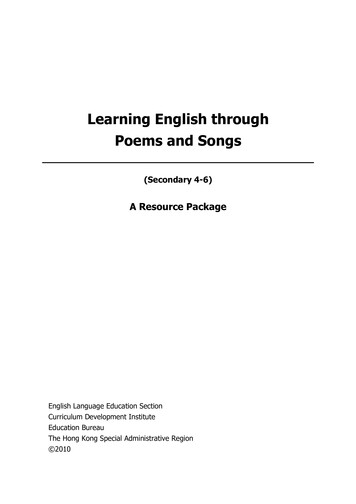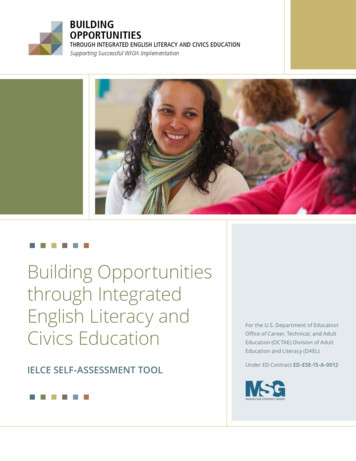
Transcription
http://sbooks.orgbooksmania.net
Harvard English , 59 , Cover Photo: Burke/Triolo Productions/Brand X Pictures/Getty Images —Updated ed. Textbooks — http://sbooks.orgbooksmania.net
NOTES ON THE RE-ISSUE AND UPDATE OFENGLISH THROUGH PICTURESDESIGN FOR LEARNINGThese three pocketbooks are the remarkable invention ofI. A. Richards and Christine Gibson. Designed for learningEnglish in the quickest and clearest way—through pictures—learners are invited right from the beginning to putwidely useful words to work in key sentence patternswhere meaning is clearly shown in pictures. Each sentencesituation builds to a successful discovery of the next, whileconfirming mastery of the earlier steps. The simplifiedblack and white drawings allow the learner to focus on thesentence patterns and on success in taking control of language. Comparisons of sentence situations can be made onthe individual frames on a page and through a systematicbuilding on all that has gone before. Workbooks includedin Books I and II challenge and reinforce growing competencies, while at the same time providing enriched readingand writing well within the learner’s grasp. Motivation forlearning comes from handling increasingly complex patterns successfully and confidently.WORDS WITH POWERThe three pocketbooks focus on a small, careful selection ofthe most widely useful English words put into key patterns.These are words with power to define other words and toimprove the possibilities of successful communication inany field of human endeavour. Today these are the wordsof an English most commonly employed throughout theplanet. Book I contains a vocabulary of 250 words; an additional 500 word vocabulary is developed in Book II. These750 words are used in Book III to build a command of 1000words which, by their defining power, hold the possibilityof understanding another 20,000 words of English. Book IIIinvites learners to explore much useful information aboutthe world in which they live while continuing the crucialhttp://sbooks.orgbooksmania.net
process of learning to learn. Words with power becomeinstruments for thinking. The purpose of the pocketbooksis to supply starting points from which learners can go outin different directions as their interests may take them.These are books of beginnings.TOWARD A WORLD ENGLISHThese materials have been used successfully by millionsin more than forty countries. They have been used as aself-teacher by learners of all ages, in schools and in allthose diverse settings in the world where a command ofEnglish is needed. The materials are the result of extensive research and field testing for over fifty years.Although many users’ first language will be English, millions more will come to English as a second or alternativelanguage. For this group, assistance is needed to move thelearner beyond visual comprehension to a command ofboth spoken and written English. The most effective helpwill come from a teacher with a command of Englishwho can act as a model and make corrections on pronunciation. Assistance can come as well from audio materialsdirectly matched with the text, with space for the learnerto practice speaking.In updating English Through Pictures, the greatest carehas been taken at all times to maintain the integrity of thelearning system. The updating of this re-issue is to befound mainly in Book II and III. Dates, prices, population figures, other factual information, and selectedillustrations have been updated for current usage. Thisupdating must, of course, be a continuous exercise by thelearners. The pocketbooks must become their own, and abase or frame on which future learning can be mountedsafely and effectively.Archie MacKinnonFebruary, 2005http://sbooks.orgbooksmania.net
SUGGESTIONS TO THE BEGINNERYou can go a long way in learning everyday English throughthis book. About three hundred of the most widely usefulwords in the new language are put to work for you in keysyntax patterns so that you will not find them difficult tomaster and apply. These common words in their commonsentence forms are made clear to you page by page with thehelp of pictures. Read each page from left to right, 1-2, andthen from left to right again in the two lower frames, 3-4.1234As you work with the book you will see that each page ispart of a larger design, building systematically upon thepages which go before it. Moreover, each page has its ownorganic relations between its several parts. The individualframes, 1, 2, 3 and 4, become comprehensible to you withthe help of one another. Study the pictures on a page andyou will see, as you examine the sentences which accompany them, how the sentences change with the details in thepictures, and why. Follow the sequence to find out whatthe sentences say. New words will take on meaning as youproceed, and your knowledge of the language will develop.For example, consider page 14 of the book for a moment.Picture 1 on that page shows a man beside a table whichhas a hat on it. The hat is a man’s hat. The accompanyingcaption reads: “His hat is on the table.” If you turn back toPage 12 you will see how his was explained in the second,third and fourth pictures in contrast to my in the firstand your in the first picture on the adjoining page.http://sbooks.orgbooksmania.net
The meaning of the word hat has been established beforethis, on page 10, with frame 3, and the work of the wordis has previously become clear through a range of simplestatements starting on page 1. The words the and tablehave been explained through the pictures on Page 10, andthe only new feature of the sentence, the word on, is givenmeaning from the new picture.Turn now to frames 2, 3 and 4 on the same page (14), andyou will see that will take and off in frame 2 becomemeaningful as you compare them with taking and off inframe 3, and with took and off in frame 4. The other partsof all these sentences are already familiar. They providethe framework which gives these new features of vocabulary and structure their support.You will notice that the new items on this page are mastered without recourse to a translation or bilingual dictionary. While you are working alone from page to page,comparing pictures and sentences and getting new meanings clear, it is well to keep your own language as far aspossible out of your mind. Don’t translate. If you do, thesounds, the sentence forms and the meaning patterns ofyour own language will get in your way and make yourlearning of English more difficult.What has been said so far about your attack upon the newlanguage refers to eye-learning, visual comprehension. Thebest aid to pronunciation is of course a teacher with anative speaker’s command of English to supply you withmodels and correct you where you go wrong. The next besthelp is a series of good audio tapes with pauses for you tofill with your best imitations. But even without tapes or ateacher, much help can be got through careful study of thedescriptions of English sounds. A word of warning, however, is in order. If you have not carefully taken in and mastered these aids, do not vocalize the English in your study.http://sbooks.orgbooksmania.net
By reading the English as if it were your own languageyou can form habits which will be a hindrance to youlater. Be content to develop at first only a reading andwriting knowledge of English unless you are able to makethe extra effort of a really serious attack on the pronunciation. If not, postpone that until you have your teacheror a set of tapes, and confine yourself to silent reading.I.A. RichardsChristine Gibsonhttp://sbooks.orgbooksmania.net
http://sbooks.orgbooksmania.net
ContentsEnglish Through Pictures Book 1 1A First Workbook Of English 123Answers 233Index 253http://sbooks.orgbooksmania.net
http://sbooks.orgbooksmania.net
ENGLISH THROUGH PICTURESBOOK Ihttp://sbooks.orgbooksmania.net
http://sbooks.orgbooksmania.net
I.1YOU.Ihttp://sbooks.orgYOUbooksmania.net
HE.2SHE.IThttp://sbooks.orgTHEYbooksmania.net
HE.3THEY.IThttp://sbooks.orgTHEYbooksmania.net
I am here.4He is there.She is here.http://sbooks.orgShe is there.booksmania.net
It is here.5It is there.They are here.http://sbooks.orgThey are there.booksmania.net
You are there.6You are there.You are here.http://sbooks.orgWe are here.booksmania.net
It is there.7They are there.We are here.http://sbooks.orgThey are here.booksmania.net
This is a man.8This is a woman.That is a man.http://sbooks.orgThat is a woman.booksmania.net
This man is here.9That man is there.This woman is here.http://sbooks.orgThat woman is there.booksmania.net
This is a table.This table is here.It is here.10That is a table.That table is there.It is there.This is a hat.It is a hat.http://sbooks.orgThis is a hand.This is the thumb.These are the fingers.booksmania.net
This is my head.11This is my hat.My hat is in my hand.It is in my hand.http://sbooks.orgMy hat is on my head.It is on my head.booksmania.net
This ismy hat.12That ishis hat.His hat ison his head.http://sbooks.orgHer hat is inher hand.booksmania.net
That is your hat.It is on the table.13Those are your hats.They are on the table.These are my hands.This ismyrighthand.http://sbooks.orgThisis mylefthand.Those are your hands.That isyourrighthand.That isyourlefthand.booksmania.net
His hat is on the table.14He will take his hat offthe table.He is taking it off thetable.http://sbooks.orgHe took it off the table.booksmania.net
He will put his hat onhis head.15He is putting his hat onhis head.He put his hat onhis head.He put it on.http://sbooks.orgIt was on the table.It is on his head.booksmania.net
He will take his hat offhis head.16He is taking his hat offhis head.His hat is in his hand.It was on his head.http://sbooks.orgHe took his hat off.It is in his hand.booksmania.net
This is a hat.These are hats.This is a hand.These are hands.17This is a table.These are tables.This is a man.These are men.http://sbooks.orgThis is a woman.These are women.booksmania.net
This is a man.This ishis hand.It is the man’s hand.18This is a woman.This isher hand.It is the woman’s hand.This is a man’s hat.It is on a man’s head.Now it is in the man’shands.It is in his hands.http://sbooks.orgThis is a woman’s hat.It is on a woman’s head.Now it is in the woman’shands.It is in her hands.booksmania.net
He will give his hat tothe man.19He is giving his hat tothe man.He gave it to the man.He gave it to him.http://sbooks.orgIt is in the man’s handsnow.booksmania.net
The man will give his hat
ENGLISH THROUGH PICTURES DESIGN FOR LEARNING These three pocketbooks are the remarkable invention of I.A. Richards and Christine Gibson. Designed for learning English in the quickest and clearest way—through pic-tures—learners are invited right from the beginning to put widely useful words to work in key sentence patterns where meaning is clearly shown in pictures. Each sentence
